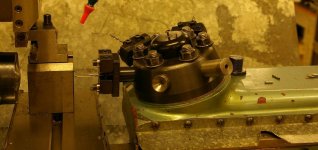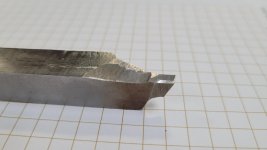Relatively new to machining and 100% self taught, P.M. has been a wealth of knowledge for me so far, so I thought I would ask the experts.
I frequently need to cut parts to length, cutting off the length off the threads. Is there a proper tool or method to cut off the threads and clean up the end? I usually use a parting tool to length then change tools and put a 60 angle on the end and hope I don't have to chase the threads with a die after. There has to be a better way. Any help/advice would be appreciated.
I frequently need to cut parts to length, cutting off the length off the threads. Is there a proper tool or method to cut off the threads and clean up the end? I usually use a parting tool to length then change tools and put a 60 angle on the end and hope I don't have to chase the threads with a die after. There has to be a better way. Any help/advice would be appreciated.









